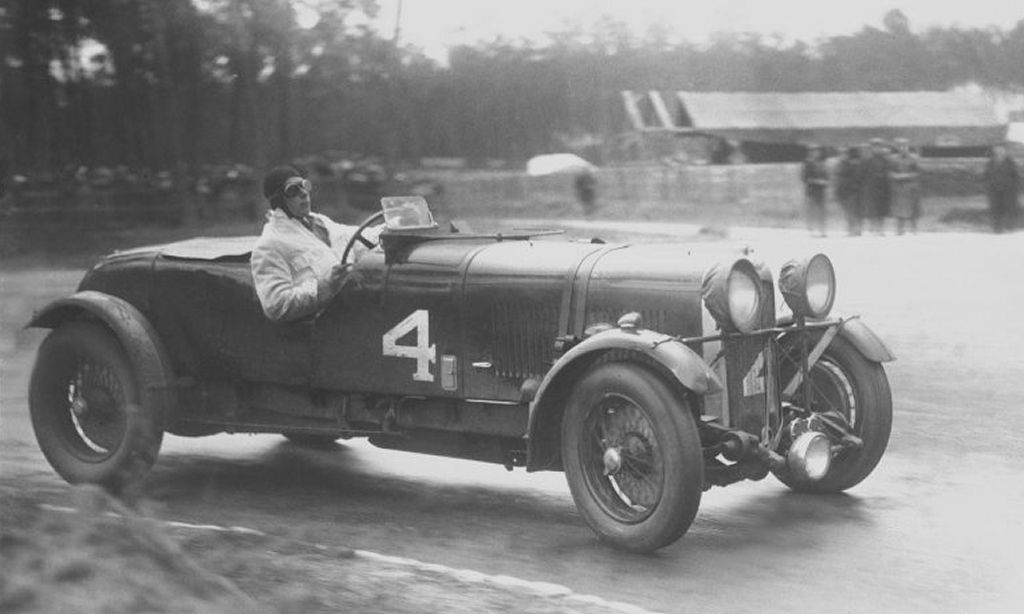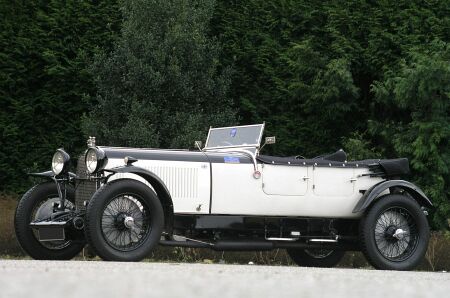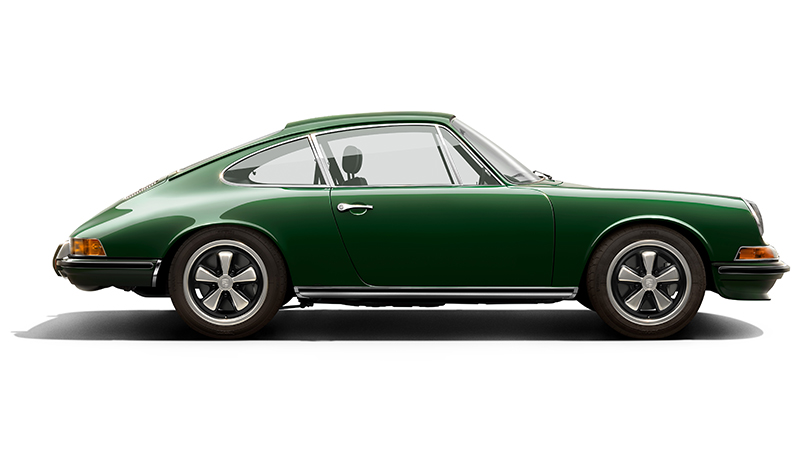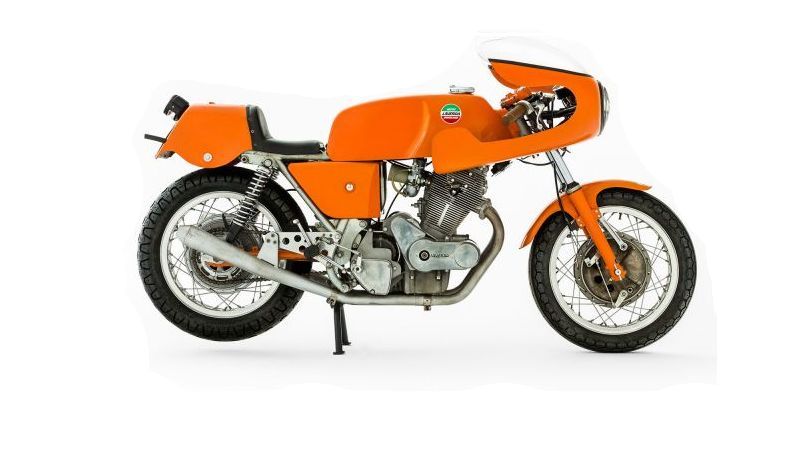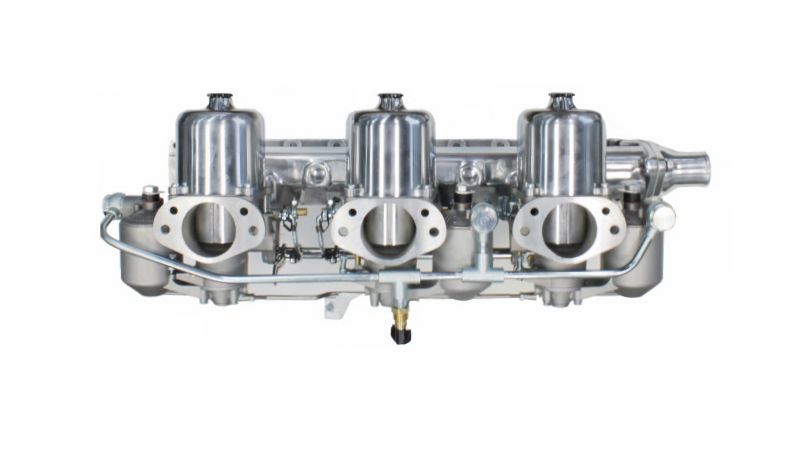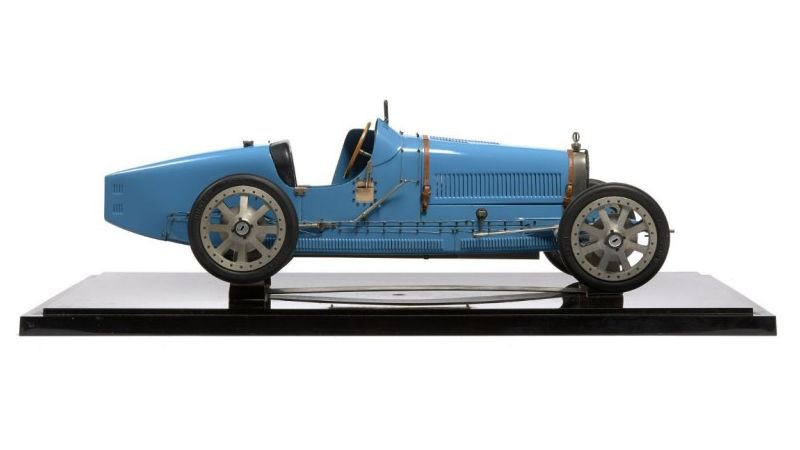Lagonda Motor Cars
example Lagonda successfully Sold
Engineering & Singing
The Company was started by an American, Wilbur Gunn, who had two main interests, engineering and singing. Although he had been apprenticed to Singers in America, it was as an opera singer he came to Britain.
He built a steam yacht Giralda that won wagers as to which was the fastest boat on the Thames, and eventually started to build motorcycles in 1898 working from the greenhouse of his home at Staines, around which the factory eventually grew.
The name Lagonda was the Shawnee Indian name for what is now Buck Creek in Gunn's native Springfield, Ohio. The Gunns had lived in Springfield since the middle of the nineteenth century, Wilbur being born in 1859, and Wilbur's father was a founder of the Lagonda Corporation that made tube cleaning machinery.
The motorbikes were successful, so much so that a Lagonda represented Great Britain in the International Cup races held in the interval between the Paris-Madrid and the first TT. With the addition of A H Cranmer to the firm in 1904, he progressed to three wheeled forecars and these grew to have twin cylinder water cooled engines of about 1200 cc by 1905 and later, wheel steering as well.
About seventy forecars were built, of which three survive. No motorbikes are known to have survived although one was in existence in 1930, but has not been heard of since. A H Cranmer stayed with the firm as Technical Director until 1935 and was still alive, at the age of 85, in 1956.
The success of the forecars encouraged Gunn to go into motor manufacturing seriously and he started with a 10 hp car using a lot of parts, including the engine, from the last forecar model. Only a few were made, however, and the next model was larger, employing a Coventry-Simplex engine and JAP carburettor.
This model then grew into the 16/18 hp. with Polyrhoe carburettor and electric lighting. It had heavier axles than its predecessor, the rear one continuing to employ parallel trailing links to locate it. Both cars employed a rudimentary form of unitary construction using tinned steel sheet fastened to a light angle section framework.
As you see, Gunn was a farsighted engineer and not afraid of innovation. This model was raced at Brooklands in 1909 and took part in, and won, the 1910 Moscow-St. Petersburg Reliability Trial and, as a result, secured large export orders from Russia, the cars supplied having a 20 hp engine and stronger chassis and axles.
Around 1910 a six cylinder 30 hp. engine was produced with Lagonda-made engine, cylinders in pairs, still with cone clutch and outside gear change. A removable hard top was one of the body types available. None of these models has been known to survive, although the considerable export trade to Russia leaves the intriguing possibility that one may turn up one day.
In 1913, another of the changes of policy took place with the introduction of the 11.1, a light car utilising a more advanced version of the angle iron/tinned sheet steel unitary body chassis systems as the earlier cars and dispensing with the chassis frame altogether.
The engine had exposed overhead inlet and concealed side exhaust valves to feed its 1099 cc (67 x 78 mm), the sump casting was fixed to the chassis with the engine bolted to it rather than the normal way round and the steering was geared direct i.e. 1:1 ratio.
It sold for 135 pounds as a two seater coupe with transverse leaf front spring and quarter-elliptic rears. It was joined by a four seater in 1914. During the 1914-18 war the Staines factory turned out armaments, largely shells, but on the return of peace the 11.1 was put into production again with slight modifications. The steering was geared now and, quite soon, the longer 11.9 wheelbase was introduced with a larger engine of 1420 cc (69 x 95mm) featuring a separate block and crankcase and an angular honeycomb radiator.
The 11.9 continued in production until 1923 when it became the 12/24 but, due to continued increases in weight, it became steadily lower geared as time went on. There were several variants, including a stark cheap model with no starter or instruments and the bare legally necessary lamps.
The 12/24 continued to attract weight like its predecessor, acquiring concealed valves, a taller radiator, forced valve gear lubrication, and finally, in 1925, front wheel brakes. The last models had a more rounded radiator form, which became the basic style followed until 1939.
The Company continued a slender sporting programme with stripped cars, including an overbored single seater which, driven by Major W H Oates, covered 79.17 miles in an hour at Brooklands and thus won the Light Car Trophy.
Wilbur Gunn had worked astounding hours during the war and never really recovered his health afterwards, dying in 1920. All the models he fathered were technically interesting as well as practical cars; after his death the products became far more conventional, though no less practical.
The total production of 11.1, 11.9 and 12.24's is unknown but was in the region of 7000; of these about 20 are known to have survived, including at least on 1913 car in regular use.
At the 1925 Motor Show the 14/60 was introduced as a successor to the 12/24. This was the first 2 litre and had a conventional chassis frame and half elliptic suspension, separate engine and gearbox and very good brakes.
The engine was a twin more-or less-overhead cam design whereby the cams are actually in the top of the block but above the head/block interface, and the combustion chambers were hemispherical. The early 14/60's tended to have heavy tourer and saloon bodies and had a top speed of 60 mph. The engine was 72 x 120 mm, four cylinders, and giving 1954 cc.
In 1927 the Speed model was introduced with more power but still with one carburettor; it was lighter and capable of about 80 mph. The high chassis Speed Model was the first true 2 litre and the 14/60 soon died out after its introduction, thought the designation standard and speed model continued. Both chassis are the same 10 foot 3 inches wheelbase.
There are various subtle differences between all the years of 2 litres but the major one is in the front axle and the early ones are known as high chassis. These have the front brake rods attached to the underside of the axle, and the later cars (1929 and on) are low chassis with the brake rods passing through the axle.
The low chassis cars are a development following the Lagonda Company's efforts at Le Mans in 1928. For the low chassis engine the dynamo was moved from the offside to the nose of the crankshaft where it fitted underneath the radiator.
On the earlier engines of this sort, the idler gear which had driven it was removed, thus reversing the camshaft's direction of rotation and, since similar camshafts were used, necessitating a change of firing order. After quite a short production run, the idler gear was replaced and the later engines returned to the 1-2-4-3 order.
The inlet passages of the 2-litre engine were its Achilles heel due to their tortuousness and, in 1930, a supercharged version was introduced. This had a slightly longer bonnet to accommodate the blower which was carried vertically in front of the engine.
They also had a more robust, balanced crankshaft and a 3 litre rear axle. Unfortunately they were never too reliable due to cooling problems and, although fast, used a great deal of petrol. Many today are running unblown, though members are endeavoring to return original blown cars back to this state.
The final fling of the 2 litre was the unblown Continental which had a steel body instead of fabric covered, slanting slatted radiator and 18" wheel giving lower gears. At the end of 1932 the same chassis was used for the 16/80 which, instead of Lagonda's four cylinder engine substituted 2 litre six cylinder of 1991cc (63 x 100mm) made by Crossley.
The radiator resumed it's upright stance, but was of a new shape. Later 16/80's had the ENV pre-selector gearbox available as an option and quite a number were so fitted. It became standard towards the end of 1933.
The total number surviving of 2 litres is difficult to estimate, but the Club's records cover about 450 2 litres and 150 16/80s. Many of the original cars were fabric saloons and these bodies have not stood the test of time compared with tourers which dominate the current member's list.
In 1925 Lagonda introduced a six cylinder car called the 16/65 which was 2692cc (69 x 120mm) and with push rod operated overhead valves. Although designed by Davidson and Masters who were responsible for the 2 litre and produced, legend says, at the direct insistence of Brigadier General Metcalfe who was the Director, it didn't prove very popular; in 1928 it was bored out to 2931 cc to become the three Litre.
Although never as popular as the two litre, it had a long model run, finishing in 1934 and being succeeded by the 31/2 litre which used yet another variant of the same engine in a different chassis. Outwardly, the 2 litre and 3 litres of the Vintage period look remarkably alike but the latter has a longer bonnet and a distinctive sump shape which enables them to be distinguished.
One variant of the 3 litre sometimes encountered is the Selector Special of 1932 which has a Maybach gearbox with eight forward ratios. Not many were made. Both 16/65 and 3 litres used a 10'9" wheelbase but there are two kinds of chassis.
The earlier Z chassis bears a distinct family resemblance to the 2 litre and a few early high chassis cars exist. Later and coinciding with the introduction of the Selector Special a heavier chassis with straighter side members, tubular cross members and different axles was adopted and it was this ZMB chassis which was developed into the 41/2 litre M45.
The 3 litre was also bored out during its life but the engine size change does not coincide with the chassis change. The earlier cars are 72 x 120 mm (2931 cc) and later ones 75 x 120 mm (3181 cc). Both versions have seven-bearing crankshafts. On the 1932 cars a new radiator badge featuring stylized wings was introduced and this became a feature of all subsequent Lagondas.
Lagonda have always been a sporting concern and a programme of long-distance events were entered with 2 litres and later 3 litres. In 1928 D'Erlanger & Hawkes came 11th at Le Mans after running with a cracked frame and no front brakes for the bulk of the event and, in 1929, another team was entered but with no success.
At the 1933 Olympia Show the first 41/2 litre, the M45, was introduced. It used a Meadows engine of 4453cc slightly modified by Lagonda's but otherwise similar to that used by the Invicta. This engine was already somewhat venerable having started life in 1925 as 63.5 x 120mm and been progressively bored out In its Lagonda form it had the bores offset to get them in.
The chassis was basically the current 10'9" 3 litre but fitted with servo brakes and a heavier rear axle. The 3 litre gearbox proved inadequate very quickly and Meadows' own box became standard, most of the early cars being rebuilt with it quite soon.
The engine had dual ignition, one coil one side and horizontal magneto the other. The M45 was a great success and Lord de Clifford got it off to a good start with a highly publicised run to Greece in the prototype, beating the train to Brindisi by 14 hours.
For the 1934 TT a trio of lightweight short chassis cars run by Arthur Fox and equipped with Girling brakes put up a splendid showing. These cars were virtually M45 Rapides, which were announced a few weeks later. During 1934 General Metcalfe had died and was succeeded as Chairman and Managing Director by Sir Edgar Holberton.
At the 1934 Show Lagondas introduced a whole batch of new cars. The 41/2 litre M45 was supplemented by a Rapide Model (M45R) on a shorter, stiffer chassis and fitted with Girling brakes and a more highly tuned engine. A very similar short chassis was also sold with the 31/2 litre 84 x 120mm (3619cc) engine (M3SR) which was the final manifestation of the 16/65 and 3 litre engine.
The prototype Rapier was shown at the 1933 show but this did not get into production until the following summer, and when it was it had Lagonda's own 1104cc (62.5 x 90mm) sturdy twin overhead cam engine designed by Tim Ashcroft, as was the whole car.
It had the ENV Preselector gearbox as standard, with a clutch, in an 8'4" wheelbase chassis fitted with very powerful Girling brakes. For this model Lagonda decided not to build the bodywork themselves, probably for space reasons and the standard bodies were supplied by Abbott of Farnham, although several other coachbuilders performed on this chassis.
The Rapier was easily the highest revving British production car of the period and part of its long lasting qualities are no doubt due to the last-minute decision to cast the block and head in Chromium iron instead of the light alloy for which it had been designed, without changing the design.
Many Rapiers survive today in active use, and supported by, the Rapier Register as well as the Lagonda Club. The Rapier Register is a separate club but as many members own both models, there are very close links between the two.
During 1934-1935, as well as the M45, new 41/2 and 31/2 litre Rapides and Rapier models, the 3 litre and the 16/80 were still available, Six models was far too many to be economic for the little factory at Staines and despite Fox & Nichol's win at Le Mans, the Company's finances grew worse and the Receiver was brought in.
The firm was saved by the intervention of Alan Good who reformed it as LG Motors and dropped all the models replacing them quickly with the 41/2 litre LG45 which used virtually an M45 Rapide engine in a revised version of the M45 chassis but with softer springing and Girling brakes.
Ashcroft couldn't accept the dropping of the Rapier and he hived off its production to the former service depot in Hammersmith where he formed Rapier Cars Limited in conjunction with W H Oates and recommenced production until financial problems called a halt in 1938.
The Rapiers were nearly all fitted with Ranalah bodies and in 1936 a supercharged version was introduced. An earlier supercharged Rapier owned by Eccles lapped the outer circuit at Brooklands at 130 mph which gives some idea of just how sturdy the 1100c,c engine was.
The Club's records cover about 225 M45s and M45Rs since 1950 and about 250 Rapiers including the Rapier Car company's products which have slight differences from the Lagonda product, notably a cylinder capacity of 1087cc. Only about 50 31/2 litres appear to have survived but there was a very short production run of less than a year.
Alan Good had brought in Walter Owen Bentley as chief designer and the LG45 was his work, although really it was only a facelift. While Bentley got on with the design of the V 12, his masterpiece. The LG45 lasted from the end of 1935 to the end of 1937, appearing in two chassis lengths (10'9" and 11'3") and four engine forms.
LG Motors developed a system of laying down cars in batches called sanctions and any changes tended to be introduced when a new sanction started. Hence the Sanction 1 to Sanction 4 41/2 litre engines were found in LG45s and Sanction 4 in LG6s.
The Sanction 1 was similar to the M45R engine; the Sanction 2 changed the ignition to twin magnetos, both on the exhaust side and the Sanction 3 had a complete cylinder head redesign, the outward signs of which are carburettors which bolt directly to the cylinder head.
The Sanction 4 is very similar to the Sanction 3. LG45s also come with two different gearboxes, the right hand change G9 with synchromesh (Lagonda's first) on third and top, being replaced later by the center change G10 which added synchro to second. The centre change made it possible to make left hand drive for the increasingly important American market but I have found no record of cars having been built like this.
The most spectacular of the variants of the LG45 is the Rapide tourer (LG45R). Whereas the M45R had been a chassis with open, drophead and even saloon bodies found on it, the LG45R was only made in one form a fairly stark four seat tourer with cycle type wings and outside exhaust. These later cycle wings are fixed and do not turn with the steering as do the earlier kind, found on low chassis 2 litres and 3 litres from 1930 on.
The Rapide has a higher compression ratio, higher gears and various other differences from the standard LG45 cars which were tourers, drophead coupes and saloons of Lagonda's own manufacture, plus the possibility of buying a chassis for another coachbuilder to perform upon.
Fox and Nicholl built four special LG45s to carry on the good work of the previous year, two 2 seaters two 4 seaters. However, Le Mans was not run in 1936 and the 2 seaters ran in the French G P instead (for sports cars that year). Although they won their class, overall placing was poor.
One of the four-seaters did much better in the Spa 24 hours race. In the TT the previous two years' duels between Bentley and with the former triumphant again, but this was reversed in the 500-mile race at Brooklands.
The 1935 Le Mans finishers were allowed to carry over their places in the Biennial cup until 1937 but only one Lagonda started and retired after 30 laps. That 1925 engine was beginning to be outclassed now. However, one of the LG45 team cars did manage 100 miles in an hour, two up, at Brooklands, in November 1937 and the following year a V12 saloon repeated the feat.
No entries were made at Le Mans in 1938 but in 1939, two special light V12 two seaters were built by the factory this time, were entered and came 3rd and 4th even though really running as a development exercise prior to an all out attack in 1940, which was never to be.
Out of a production of 278, about 150 LG45s of all types survive, and all 25 "genuine" LG45 Rapides are accounted for and nearly all the works and Fox and Nicholl competition cars still exist in Club members' hands.
The LG6 was the last development of the six cylinder 41/2 litre. It used a similar chassis to the VI2 but of different wheelbase. This chassis has nothing in common with the earlier LGs, being diagonally cross braced instead of ladder form and is independently suspended by torsion bars at the front, using unequal length wishbones.
It also featured hydraulic brakes with a tandem master cylinder so that a failure on one pair of wheels left braking on the others. The V 12 and the LG6 came out together at the 1937 Motor Show with production starting at the beginning of 1938.
The V 12 was also a 41/2 litre, being 4480cc (75 x 84.5mm) and coming in three chassis lengths according to the sort of body required. All could do about 100 mph, the lighter ones considerably more. The LG6 came on a 10'71/2" wheelbase standard chassis and on 11'31/2" long one, whereas the V 12 had 10'4", 11'0" and 11'6" wheelbase versions and, in each case, a taller radiator was fitted to the longer cars to preserve the balance of their looks.
A new design of radiator was employed for both models with a deeper top tank and a curved top line to be slats, imparting a rather melancholy expression to the front. The 31/2" difference in wheelbase between the models is accounted for by the difference in length between the six and twelve cylinder engines, and otherwise they were similar. The rear axle was a new one too, being of hypoid design and American manufacture for the V12 but retaining Lagonda's tried spiral bevel for the LG6.
Both LG6 and V12 ranges featured a Rapide model but, in both cases, it was a much tamer car than the LG45R and the bodywork is normally a close coupled drophead or tourer not very different from the standard cars and with slight differences in the engine.
The V12 engine has one overhead cam per bank and two SU carburettors for the standard engine, four for the more advanced ones. Rather surprisingly, production did not stop at the outbreak of war and some cars were delivered to (usually American) customers well into 1940.
The Club has records of about 50 LG6s out of 82 made and about 100 Vl2s out of 185. It is a pity that the war interrupted the development of the V12, a complex car which didn't really reach its potential in such a short time. Two cars were built up from parts post war.
During and after the war W O Bentley was busy on a new smaller car, the 2.6 litre (78 x 90mm, 2580cc) which had a six cylinder in-line engine with twin overhead camshafts. Two or three prototypes of this car were running by late 1945, fitted with Cotal electric gearboxes.
This chassis had some superficial resemblance to an LG6 with the side members taken away but, in fact, is completely different and features independent front suspension by wishbones and coil springs, and rear by torsion bars and semi-trailing axles with the pivots at an angle, as later used by Fiat and Triumph in modified form. The rear brakes were inboard which is no doubt sound in theory but requires a great deal of dismantling to reach in practice.
The Company was unable to put the 2.6 into production for lack of a steel ration and David Brown bought the company, as he did with Aston Martin, and merged them in 1948. The Bentley designed engine and chassis were the company's chief assets and they and the car works were transferred to Feltham and the Staines factory sold to Petters the diesel engine firm, who were still there until 1989 when the site was cleared and a supermarket built.
Bentley did not go with the company to Feltham, preferring to set up as an independent and consultant. More prototype 2.6s appeared using a David Brown S430 synchromesh gearbox and, in this form, the car went into production early in 1949.
Most of the bodies were built by the factory but a few went to coachbuilders, notably Tickford who slowly took over production of more and more cars. The Bentley 2.6 engine was later used in the DB2 and DB2/4 Aston Martins, the latter eventually in the 3 litre form.
The 2.6 litre was slightly altered into MK2 form at the end of 1952 to take advantage of better petrol becoming available but the differences are fairly minor, compared with the following year when the engine was enlarged to 3 litres by staggering the cylinder bores whilst Retaining the same crankshaft, necessitating offset connecting rods (83 x 90mm, 2922cc). Although the rest of the chassis wasn't altered much, a quite different body was designed for the 3 litre, again by Tickford.
Eventually there were two door and four door saloons and a convertible. In 1955 David Brown took over Tickfords and in 1955 the whole operations of Aston Martin Lagonda were moved to Newport Pagnell in Buckinghamshire where the Tickford works had always been and Feltham was closed.
In October 1956 a MK2 3 litre appeared, featuring floor gear change and various other minor changes, and the convertible was dropped The saloons were discontinued in February 1958. The total production DB 2.6 litres was 511 plus 6 prototypes and the 3 litres 256. The numbers surviving are difficult to estimate as not a very high percentage of their owners join the Club.
There was then no Lagonda made for nearly four years until the Motor Show of 1961 when the 4 litre Rapide was introduced (96 x 92mm, 3995cc). This was virtually a four door DB4 Aston Martin and had nothing in common with earlier models. The only major difference from the DB4 apart from the styling lay in the De Dion rear suspension, different carburation and the availability of automatic transmission. 55 were made in 1962-1964.
The first hint of a new model appeared in 1971 when Sir David Brown had a personal car made which was a four door Aston Martin DBS and carried Lagonda badges. However, the company was about to undergo one of its upheavals and, in 1972, Sir David stepped down and the company was sold to Company Developments Ltd, headed by William Wilson.
The new owners dropped the 6 cylinder cars and, in November 1974, produced the Lagonda V8 as a production model. This was a William Towns design, very like Sir David Brown's car but with alloy wheels instead of wire ones. Only seven were made up to June 1976.
By then yet another set of owners had appeared in the spring of 1975 and this group, led by Peter Sprague and George Minden set in. motion the design process that led to the second V8 Lagonda which was introduced at the London Motor Show of October 1976.
It was a striking looking car and was an immediate sensation with its wealth of electronics. It remained in production until 1990 and, at one time, formed the bulk of Aston Martin Lagonda's production, being particularly favoured by Middle-East sheiks. 645 were built and 631 sold, the rest being crash test victims, prototypes etc.
Since 1990 there have only been tiny numbers of Lagondas produced, it being Aston Martin Lagonda's practice to call four door Aston Martins this. Thus there were half a dozen four-door Virages, all of which were exported, and the Vignale prototype which was also badged as a Lagonda.
We are looking for the following cars. If you do have any of the below listed vehicles - and you are ready to sell - please Contact Us.
| Lagonda |
|---|
| 14/60 & Speed |
| 3-Litre |
| 16/80 |
| M45 |
| LG45 |
| LG6 |
We buy, sell, broker, locate, consign and appraise exceptional classic, sports and collector Lagondas'
Contact us when you are serious about buying a fine Lagonda Motor Car or to arrange a free and confidential valuation with a view to selling.
